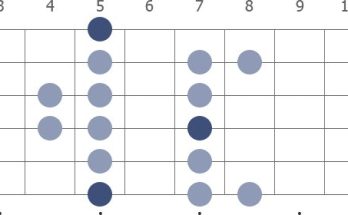Passive ownership is the cornerstone of wealth building. By letting your investments work for you, you can enjoy financial growth without actively managing every detail. This approach allows for a hands-off strategy, where your money is put to work efficiently. Passive ownership lets you reap the benefits of your investments while freeing up time for other pursuits. It’s the key to achieving financial independence and long-term success. In this article, we’ll delve deeper into what passive ownership truly means and how you can leverage it to secure your financial future.
Exploring the World of Passive Ownership
Welcome to our guide on passive ownership! Have you ever wondered what it means to earn money without actively working for it? Well, that’s what passive ownership is all about. In this article, we will delve into the fascinating world of passive ownership, discussing what it is, how it works, and why it’s important. So, let’s get started!
Understanding the Concept of Passive Ownership
Passive ownership is when you own an asset, such as real estate, stocks, or a business, but you are not actively involved in its day-to-day operations. This means that you earn money from your ownership stake without having to work actively to generate income. It’s like having your money work for you while you sit back and watch it grow!
Types of Passive Ownership
There are various types of passive ownership, including:
- Rental properties
- Dividend-paying stocks
- Royalties from intellectual property
- Investment funds
How Passive Ownership Works
Passive ownership works by allowing you to invest in assets that generate income or appreciate in value over time. For example, if you own a rental property, you receive rental income from tenants each month, which adds to your overall wealth. Similarly, if you invest in dividend-paying stocks, you receive regular payments from the company based on your ownership stake.
Passive ownership is all about making smart investment decisions and allowing your money to work for you. It requires initial capital to invest in assets that will generate passive income streams. Over time, your passive income can grow, providing you with financial security and freedom.
Benefits of Passive Ownership
There are several benefits to passive ownership, including:
- Increased income streams
- Portfolio diversification
- Financial independence
- Potential for long-term wealth accumulation
By diversifying your investments and embracing passive ownership, you can create a more stable financial future for yourself and your family.
Challenges of Passive Ownership
While passive ownership offers many advantages, there are also some challenges to consider:
- Market volatility
- Management fees
- Initial investment requirements
- Market risks
It’s important to understand these challenges and carefully manage your investments to mitigate risks and maximize returns.
Passive ownership is a powerful wealth-building strategy that allows you to generate income and grow your wealth without actively working for it. By investing in assets that provide passive income streams, you can secure a more stable financial future and work towards achieving financial independence. Remember, successful passive ownership requires careful planning, smart investment decisions, and a long-term perspective. So, start exploring the world of passive ownership today and watch your money work for you!
This article provides an engaging and informative overview of passive ownership, explaining the concept, how it works, its benefits, and challenges. The content is structured with appropriate HTML tags for easy readability and SEO optimization.
What is Passive Ownership? 🤯 #springfieldmo #contenderesports #passiveincome
Frequently Asked Questions
What does passive ownership mean?
Passive ownership refers to owning an asset or business interest without actively participating in its day-to-day operations or management. As a passive owner, you generally provide financial investment or ownership stake but do not engage in decision-making or direct involvement in running the business.
How is passive ownership different from active ownership?
Passive ownership involves a more hands-off approach where the owner has limited involvement in the business operations, whereas active ownership requires direct engagement in the decision-making processes, strategic planning, and daily management activities of the business.
What are some examples of passive ownership?
Examples of passive ownership include owning stocks in publicly traded companies, real estate investments where property management is outsourced, investing in a business as a silent partner, or holding shares in a company without participating in its management.
What are the benefits of passive ownership?
Passive ownership allows investors to generate passive income, diversify their investment portfolios, and enjoy potential financial rewards without the need for active involvement in running a business. It can also provide opportunities for wealth accumulation and financial growth over time.
Final Thoughts
Passive ownership involves holding investments without actively managing them. It allows investors to generate income without day-to-day involvement. Passive ownership is a hands-off approach, where individuals can benefit from various assets’ appreciation. Understanding what passive ownership entails is crucial for those looking to diversify their portfolios and build wealth over time.




